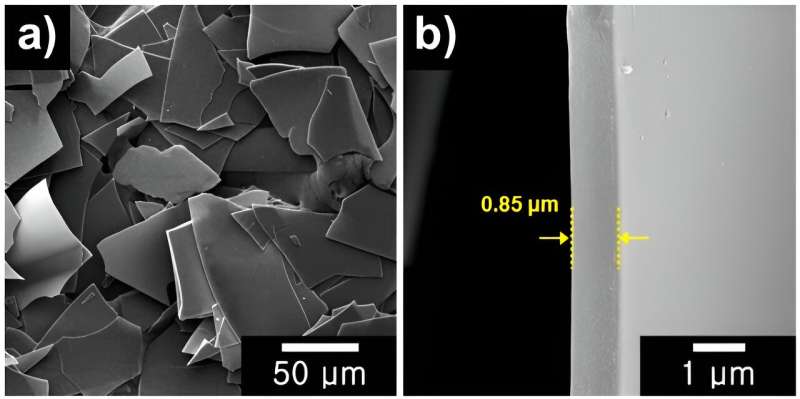This article has been reviewed according to Science X's editorial process and policies. Editors have highlighted the following attributes while ensuring the content's credibility:
fact-checked
peer-reviewed publication
trusted source
proofread
Chemists develop highly reflective black paint to make objects more visible to autonomous cars

Driving at night might be a scary challenge for a new driver, but with hours of practice it soon becomes second nature. For self-driving cars, however, practice may not be enough because the lidar sensors that often act as these vehicles' "eyes" have difficulty detecting dark-colored objects.
New research published in ACS Applied Materials & Interfaces describes a highly reflective black paint that could help these cars see dark objects and make autonomous driving safer.
Lidar, short for light detection and ranging, is a system used in a variety of applications, including geologic mapping and self-driving vehicles. The system works like echolocation, but instead of emitting sound waves, lidar emits tiny pulses of near-infrared light. The light pulses bounce off objects and back to the sensor, allowing the system to map the 3D environment it's in.
But lidar falls short when objects absorb more of that near-infrared light than they reflect, which can occur on black-painted surfaces. Lidar can't detect these dark objects on its own, so one common solution is to have the system rely on other sensors or software to fill in the information gaps. However, this solution could still lead to accidents in some situations.
Rather than reinventing the lidar sensors, Chang-Min Yoon and colleagues wanted to make dark objects easier to detect with existing technology by developing a specially formulated, highly reflective black paint.
To produce the new paint, the team first formed a thin layer of titanium dioxide (TiO2) on small fragments of glass. Then the glass was etched away with hydrofluoric acid, leaving behind a hollow layer of white, highly reflective TiO2. This was reduced with sodium borohydride to produce a black material that maintained its reflective qualities.
By mixing this material with varnish, it could be applied as a paint. The team next tested the new paint with two types of commercially available lidar sensors: a mirror-based sensor and a 360-degree rotating type sensor. For comparison, a traditional carbon black-based version was also evaluated.
Both sensors easily recognized the specially formulated, TiO2-based paint but did not readily detect the traditional paint.
The researchers say that their highly reflective material could help improve safety on the roads by making dark objects more visible to autonomous vehicles already equipped with existing lidar technology.
More information: Suk Jekal et al, Designing Novel LiDAR-Detectable Plate-Type Materials: Synthesis, Chemistry, and Practical Application for Autonomous Working Environment, ACS Applied Materials & Interfaces (2024). DOI: 10.1021/acsami.4c00470
Journal information: ACS Applied Materials and Interfaces
Provided by American Chemical Society




















